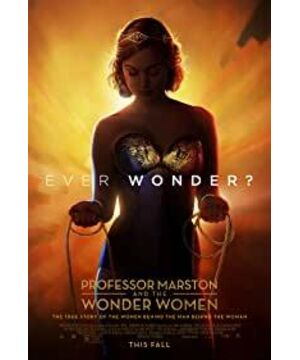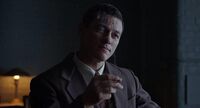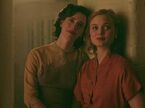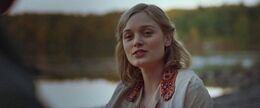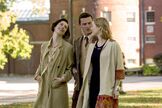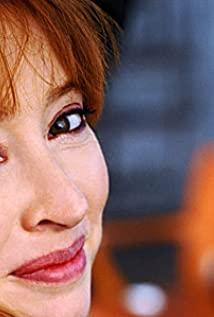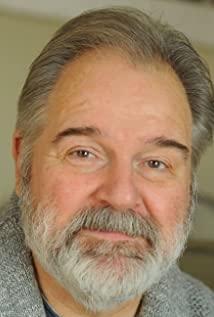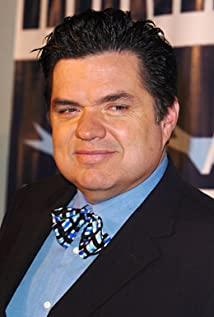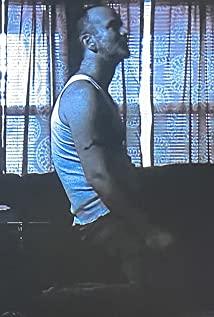Originally contained in the personal public account: A mountain monster (or search for herringcat)
-------------------------------------------------- -------------------------------
"Dr. Marston and Wonder Woman" premiered in the U.S. last October, earning only $1.9 million at the box office, but 87% freshness on iMDb 7.1 and Rotten Tomatoes gave the film a not-so-bad rating. score. When the movie was released on a large scale, I hesitated for a long time. In fact, the threesome and the gimmick created by Wonder Woman are still attractive enough, and the male protagonist is Luke Evans (I think in the live-action version of Beauty and the Beast, his The degree of reduction is the highest), and Rebecca Hall, who has barely made a big move after "Midnight in Barcelona". But in the end I never watched it. The domestic resources have been out for a month and a half. I just finished watching it last week, so I went to make up the real history, and found that the script of the movie is still a lot worse than the real history, so this is the story of the week.
The film opens with a scene where Professor Marston and his wife Holloway come to teach at Tufts University. So let's add a little background, William Moulton Marston, born in 1893, is the only heir to the Moulton family. His first, last, but not only wife, Sadie Elizabeth Holloway, was born in the same year as Marston and attended the same high school in Cliftondale. In 1911, after graduating from high school, Marston went to Harvard, and Holloway went to Mount Holyoke, the nation's first women's college. Both graduated in 1915, and in September of that year, Holloway and Marston married.
After the marriage, Marston continued to study law at Harvard University. Because Harvard refused to accept female students at the time, Holloway, who was also passionate about law, eventually went to Boston University (this is also the beginning of the film. feminism is still underappreciated). In 1918, Marston received a bachelor's degree in law from Harvard University and went to teach at the American University in Washington, but soon lost his job due to a lawsuit. In 1925, Marston became a professor at Tufts University, where he met Oliver Byrne, then a junior, who later became his experimental assistant and one of his wives.
The beginning of the movie is very strong, and the dialogue between Holloway and Marston quickly enriches the two people, the characters who coexist with reason and emotion.
And quickly brought the subject to Marston's research project at the time, a theory of emotion derived from "the inevitable same-sex relationships in prisons". Marston classified the four main emotions as: Dominance, Induction, Submission, and Compliance. It was in this psychology class that Oliver Byrne made a connection with Marston and became Marston's assistant in this experiment. She took Marston to an interview with the Alpha Omicron Pai Sorority (called the "baby party" in the film), where new members were asked to dress up as babies, blindfolded, and have their hands tied, during the induction ceremony. They were taken into a dark room to complete tasks, while senior members would occasionally hit those who didn't complete the task with a longboard as punishment.
However, in order to focus on the delicate relationship between Holloway, Marston and Oliver Byrne, the film apparated Holloway, who was then the editor-in-chief of the New York psychological journal "Childhood Studies: Journal of Parenting Education", to Tufts University. classroom, and made her witness the process of emotional germination between Oliver and Marston.
In fact, Holloway was first really introduced to Oliver at Oliver's graduation ceremony in 1926. In the graduation photo, the Marstons stand next to Oliver, with Oliver's mother on the other. Oliver Byrne's mother was Ethel Sanger, sister of the famous American feminist Margarita Sanger. Despite having a feminist aunt and mother, Oliver grew up in orphanages and convents and did not live with her mother and aunt until the age of 18.
In this graduation photo, the Marstons and Oliver look even closer.
After Oliver graduated, Marston also left Tufts University, possibly related to his relationship with Oliver and the baby shower interview. Then, the movie says, in the year of leaving school, Oliver became pregnant. In fact, Oliver's first birth was in 1931, the fifth year she and the Marstons were living together.
Moreover, in order to emphasize Marston's position in the invention of the lie detector at the same time, the plot of the lie detector is arranged to detect the relationship between three people, deliberately creating emotion and ambiguity in the rational spirit represented by scientific instruments. But in fact, as early as 1917, Marston began to experiment with polygraph equipment and confirmed the effectiveness of polygraph detection through changes in blood pressure. The scene of Oliver and Marston's lie detection in the middle of the night in the film is actually modeled on the lie detection scene in the photo that Marston sent to major newspapers to conduct a lie detection experiment with a beautiful female secretary.
In addition, the film does not mention Huntley's existence. She met Marston at Camp Upton, New York, in 1918. Huntley, a proponent of suffragettes, was progressive at the time, but she also believed in the power of love in shackles and chains. Marston was in a six-month relationship with her, and her belief in the tool of love became the inspiration for Marston's Wonder Woman.
later
In this relationship, all three want different things. Oliver receives from Marston and Holloway the affection she subconsciously longs for, and Marston's academic support; Holloway accepts Oliver To a large extent, considering that with Oliver, he can have a family at the same time as he has a career; and for Marston, he obviously agrees that a wise man should have more than one wife, and should pursue "a community of love". "Free Sex.
Holloway accepts the trio's request to live together so that she can have a family and a career, while Marston can have a mistress and Oliver is responsible for raising the children.
After the three began living together, Holloway became the family's main breadwinner, and Marston had a hard time finding a long-term professorship due to his disgraceful record of dismissal from his teaching career. He turned to Hollywood to provide film review and theoretical support for Universal Pictures, and it is said that "Frankenstein (1931)" and even "All Quiet on the Western Front" are more or less related to him; and Oliver raised children with Marston at home after 1928.
Holloway and Oliver Marston had two children. In 1935, Oliver voluntarily gave up custody of the children out of consideration for the legality of the family, and her two sons changed their surnames to Marston. Among them, the eldest son, Byrne Holloway Richard, changed his name to Byrne Holloway Marston, including the names of the three parents of the Marston family (inexplicably thought of Albus Severus Potter?). The four children knew who their mother was, but had a vague idea of their father and the other two female parents. "In the family census survey, the children told the interviewer that Huntley was the 'tenant' and Oliver was the 'auntie'." But Marston and their mother never seriously communicated with them about the family relationship. a question.
wonder woman
Wonder Woman made her debut in 1941 in the eighth issue of the DC Universe's All-Star Comics. Wonder Woman is the daughter of Amazon Queen Hippolyta and Zeus. Wonder Woman's usual gear includes the Lasso of Truth (from a lie detector), a pair of indestructible bracelets (from Marston and Oliver's Love Band), a headgear that serves as a projectile, and Amazonian-specific technical equipment.
Marston has great respect for women, and he once criticized "the greatest crime of comics, the terrible masculinity in them". He hopes to create a beautiful female character to document the development of women's rights. As the first superheroine in history, Wonder Woman is known as the "DC Comics Big Three" alongside Superman and Batman in the DC world.
The Paradise Island where Wonder Woman was born is a feminist world created by Aphrodite. Aphrodite rescued the Amazon female warrior who was imprisoned by Hercules in handcuffs, and fled to Paradise Island, asking for the rescued woman. Soldiers are always away from men. The taboo is broken when Captain Steve's plane crashes on Paradise Island. Athena and Aphrodite agree that Hippolyta chooses the strongest and smartest Amazon to show walking with Steve, offering help and fighting hate.
The comic begins with Diana leaving Paradise Island to duel fascists as feminism incarnate. After the end of World War II, the main line of the story turned into a duel with the incarnations of other social evil forces and the gods, including Circe (the child born of the sun god Helius and the sea god's daughter Perse), Doctor Poison, Doctor Madness... …
The "Wonder Woman" series was very popular among comics fans as soon as it was launched, but the numerous binding scenes in the comics (bound by chains, ropes, shackles, handcuffs...) caused the comics Strong opposition from the Department's Editorial Advisory Board.
Although these cartoon scenes are not entirely derived from the understanding of BDSM constraints, many of them are metaphors for the real feminists and suffragettes marching and resisting in the streets; but there are still readers who wrote to the editorial office expressing their love for it Wonder Woman is because she likes to see women tied up and pressured to get sexual pleasure.
At the request of the editorial department, Marston minimized some restraint scenes as much as possible. Regardless, Wonder Woman was a huge success and brought Marston a decent amount of money. In 1944, Wonder Woman had its own newspaper comic strip. But Marston was sick.
In August 1944, Marston was diagnosed with polio and started walking on crutches, but soon had to start using a wheelchair. It was also from then on that his assistant Joy Hemel wrote the script for the Wonder Woman comics in place of Marston, and her story was much more innocuous and much less sexy and radical. This is also the beginning of the decline of the Wonder Woman series, and the voices of doubts from society are still warm.
In 1947, Marston's cancer worsened and he died on May 2 of that year. "Wonder Woman Secret History" records the obituary of that year - "Dr. WM. Marston, psychologist, died at the age of 53. During the last five years, he was active as the creator, author and producer of Wonder Woman ...the original inventor of the deception blood systolic blood pressure test in 1915, better known as the polygraph test...he left a widow, Ms. Elizabeth Holloway Marston. 3 A son, Moulton (Peter), Oliver H., Don R. Marston, and a daughter, Miss Oliver Marston." Oliver Byrne and Huntley are not mentioned.
end
After Marston's death, Holloway wrote to DC's editorial office asking to participate in the scripting of the comics, but was turned down. In 1950, comic censor Whitham began to air his disapproval at the Committee on Colored People and the Committee on Juvenile Delinquency because of his dissatisfaction with the racism and sexual slavery of women in Wonder Woman. By the end of the 1940s, many cities had already promulgated bans. Soon, the American Comics Magazine Federation also issued new terms, which explicitly prohibited excessive bloody brutality and pornographic scenes in comics, and neither sadism nor masochism was allowed, and any illegal sexual relations (including hints of homosexuality) were not allowed. accept. In 1950, after the end of World War II, women were no longer needed, and Wonder Woman no longer pursued female independence, but was eager to become Steve's wife. At the same time, homosexual purges began to spread from Congress to the cities.
An era of silence has come, and there is much to be said about this era, but let's start with the lovers of Dr. Marston.
Huntley spent her later years living in a nursing home in Massachusetts, where she died in 1986, the day after her ninety-seventh birthday. Holloway went back to MetLife after being rejected by DC Comics, while Oliver worked at a local "Foster Health Center" clinic. They have been living together since Marston's death. Oliver died in 1990 at the age of eighty-six. When Oliver died, Holloway and her lived in the same hospital. According to Jill Lepore's research, after learning that Oliver in the next room had died, Holloway read a song by Alfred Tennyson. ) of the poem Crossing the Bar:
Holloway died in 1993.
"There was an obituary in The New York Times. It had the headline: Elizabeth H. Marston, Wonder Woman prototype, dies at 100." And that, at best, was half the truth. "
(This paragraph is the last paragraph of the last chapter in "The Secret History of Wonder Woman". I think it is appropriate and appropriated.)
—————————
Original on WeChat public account: herringcat
View more about Professor Marston & the Wonder Women reviews


